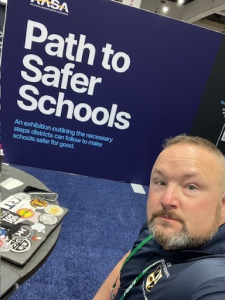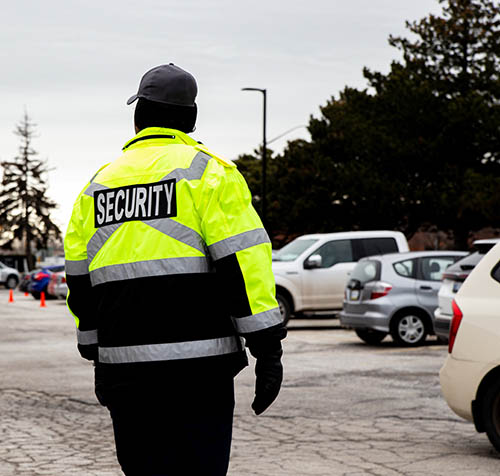The Next Step in Enhancing School Security: Why Schools Need a School Safety Director By Jason Stoddard
In an era where school safety is paramount, many educational institutions are struggling to find their footing. The cacophony of safety protocols, threat assessments, and emergency drills often feels overwhelming. Imagine a football team without a coach—players might have talent, but without strategic direction, they lack cohesion, purpose, and the ability to win. Similarly, school systems without a dedicated school safety director are at risk of fragmented and ineffective safety measures. A school safety director is not merely an overseer of protocols but a pivotal leader who builds and sustains a comprehensive, all-hazards security ecosystem tailored to the unique needs of their school district.
Navigating the Noise of School Security
The landscape of school security is complex, requiring a balance of physical security measures, mental health support, and emergency preparedness. Without a centralized figure to manage these elements, schools risk falling into disarray. A school safety director brings expertise, experience, and a focused vision, ensuring that all safety components work in harmony.
These professionals cut through the noise by providing clear, actionable plans and by integrating best practices across all aspects of school safety. From coordinating with local law enforcement to implementing cutting-edge technology, a school safety director ensures that the school’s safety strategy is proactive rather than reactive.
Building a Comprehensive Security Ecosystem
A well-rounded security approach encompasses more than just responding to threats—it involves prevention, preparedness, and resilience. School safety directors are adept at creating and maintaining an all-hazards security ecosystem. This means they prepare for a wide range of potential incidents, from natural disasters to human threats, ensuring that the school community is ready to face any challenge.
The development of this ecosystem starts with a thorough risk assessment, identifying vulnerabilities and strengths within the school environment. From there, the director collaborates with stakeholders—teachers, students, parents, and local authorities—to design a robust safety plan. This plan includes physical security measures, such as surveillance cameras and controlled access points, as well as soft measures like mental health resources and anti-bullying programs.
Parental Involvement and Accountability
While school safety begins at home, with parents teaching their children about personal responsibility and situational awareness, the role of parents extends into the school system itself. Parents play a crucial role in demanding transparency and accountability from their school district. By advocating for a dedicated school safety director with relevant experience, parents ensure that their children’s safety is managed by someone with the expertise to protect them effectively.
Parents should insist on regular meetings, town halls, and board briefings from their school’s security professional. These sessions provide a platform for parents to voice concerns, ask questions, and stay informed about the safety measures in place. Transparency in communication fosters trust and ensures that parents are partners in the safety process.
The Real-World Impact of a School Security Director
Schools that have already embraced the role of a safety director report significant improvements in their safety protocols. For example, in districts with a dedicated safety and security professional, emergency response times have decreased, communication during crises has improved, and the overall sense of security among students and staff has risen.
Moreover, these directors often bring innovative solutions to the table. Whether it’s integrating advanced threat detection systems or spearheading community-based safety initiatives, their presence ensures that schools are not only keeping up with the latest safety trends but are also leaders in the field.
Conclusion
In conclusion, the need for a dedicated school safety director in every school district cannot be overstated. Much like a coach provides guidance and strategy to a sports team, a security director brings cohesion, expertise, and a proactive approach to school safety. Parents, as key stakeholders, must advocate for this crucial role and demand regular, transparent communication from their school systems. By doing so, we can build a secure educational environment where students thrive, free from the fear of what might go wrong. It is time for schools to take the next step in enhancing security—by appointing a dedicated, experienced school safety director to lead the way. ❦
 About the Author
About the Author
Jason Stoddard is the Director of School Safety and Security for the Charles County Public Schools (MD) and chair of the National Council of School Safety Directors (NCSSD). He is responsible for sustaining a safe learning and work environment for over 27,000 students and nearly 4,000 staff members. Since coming to the public schools in April of 2018, he has created the Office of School Safety and Security, been awarded millions of dollars in grant money, implemented major evolutions such as revolving backgrounds for all employees, options-based active shooter response, the “I love u guys” Foundation Standard Response Protocols, a state of art radio communication system with public safety interoperability, first its kind intelligence unit, drone program and most recently install Gun Detect, an artificial intelligence driven solution for surveillance cameras in all the system schools.
Originally from a small town in Iowa, Mr. Stoddard came to the Washington, DC area while serving as a Security Police Officer in the United States Air Force. After completing his service obligation, he embarked on a career in civilian law enforcement. He spent over 20 years with the Charles County Sheriff’s Office rising to the rank of Lieutenant. His executive command assignments include tours within the Patrol Division, Special Operations Section (overseeing the SWAT team, K-9, Marine, Traffic, and Civil Disturbance), and Homeland Security and Intelligence Sections. He has a master’s degree in organizational leadership. He is a graduate of Northwestern University, School of Police Staff and Command, and the FBI Law Enforcement Executive Development Program.
Mr. Stoddard also serves as an adjunct professor at several universities, teaches executive-level leadership for the Maryland Police Training Commission, has authored several articles for magazines on topics ranging from school safety to organizational leadership, serves as a consultant for the Department of Justice and National Institutes of Justice, sits on several advisory boards, and has often traveled the country teaching school safety, active assailant response, leadership, data/evidence-based decision making, and crisis communications, and incident management.
